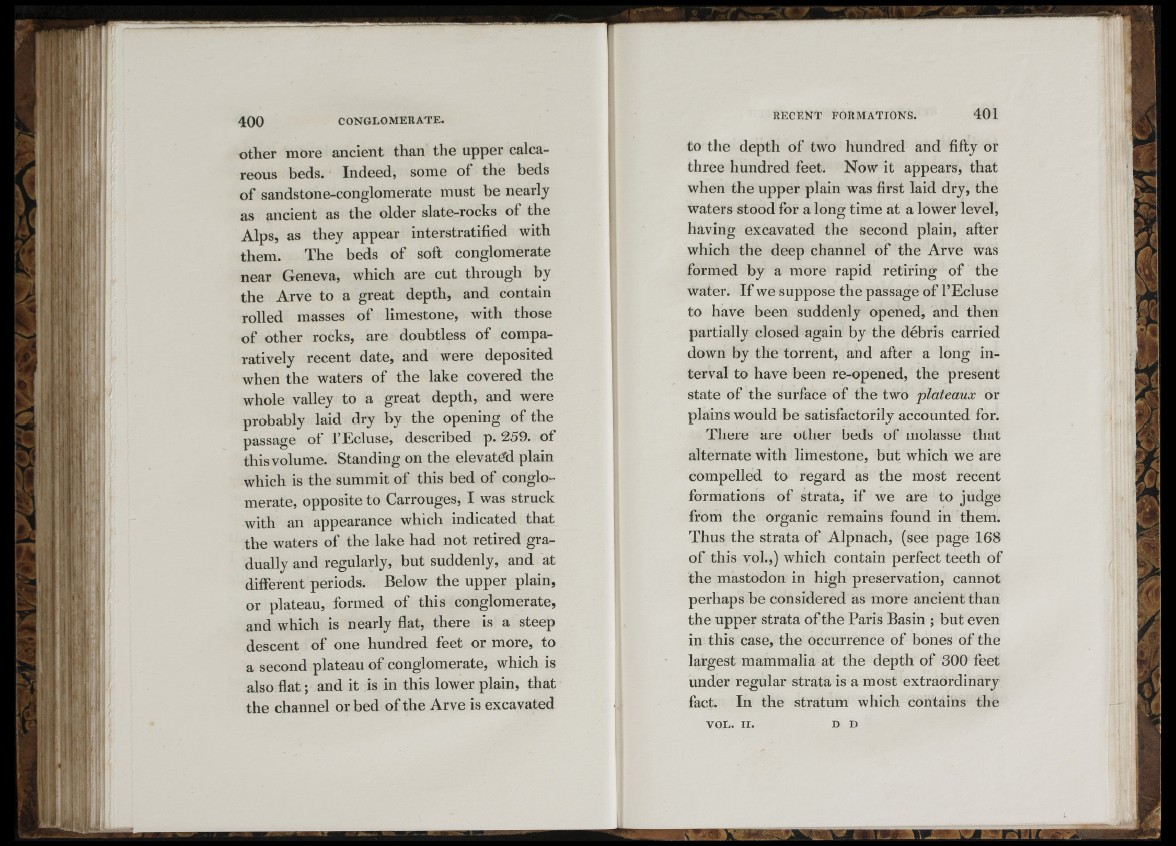
I»
f : .
jii .r,. '
'• A■ :I ^
I
iiv
X '.ii
i» M
; iî
ii I
p i b
Éi
I , ,,
UAî 1
1. r ’fiji
i i 7'
400 CONGLOMERATE.
other more ancient than the upper calcareous
beds. Indeed, some of the beds
of sandstone-conglomerate must be nearly
as ancient as the older slate-rocks of the
Alps, as they appear interstratified with
them. The beds of soft conglomerate
near Geneva, which are cut through by
the Arve to a great depth, and contain
rolled masses o f limestone, with those
of other rocks, are doubtless o f comparatively
recent date, and were deposited
when the waters of the lake covered the
whole valley to a great depth, and were
probably laid dry by the opening of the
passage of I’Ecluse, described p. 259. of
this volume. Standing on the elevatdd plain
which is the summit of this bed of conglomerate,
opposite to Carrouges, I was struck
with an appearance which indicated th at
the waters of the lake had not retired gradually
and regularly, but suddenly, and at
different periods. Below the upper plain,
or plateau, formed of this conglomerate,
and which is nearly fiat, there is a steep
descent of one hundred feet or more, to
a second plateau of conglomerate, which is
also fia t; and it is in this lower plain, that
the channel o rb ed of the Arve is excavated
to the depth of two hundred and fifty or
three hundred feet. Now it appears, that
when the upper plain was first laid dry, the
waters stood for a long time at a lower level,
having excavated the second plain, after
which the deep channel of the Arve was
formed by a more rapid retiring of the
water. I f we suppose the passage o f I’Ecluse
to have been suddenly opened, and then
partially closed again by the debris carried
down by the torrent, and after a long interval
to have been re-opened, the present
state of the surface o f the two plateaux or
plains would be satisfactorily accounted for.
There are other beds of molasse that
alternate with limestone, but which we are
compelled to regard as the most recent
formations o f strata, if we are to judge
from the organic remains found in them.
Thus the strata of Alpnach, (see page 168
o f this vol.,) which contain perfect teeth of
the mastodon in high preservation, cannot
perhaps be considered as more ancient than
the upper strata of the Paris Basin ; but even
in this case, the occurrence of bones of the
largest mammalia at the depth of 300 feet
under regular strata is a most extraordinary
fact. In the stratum which contains the
- "r
VOL. II. D D
i (
kW.jiyi4^yr